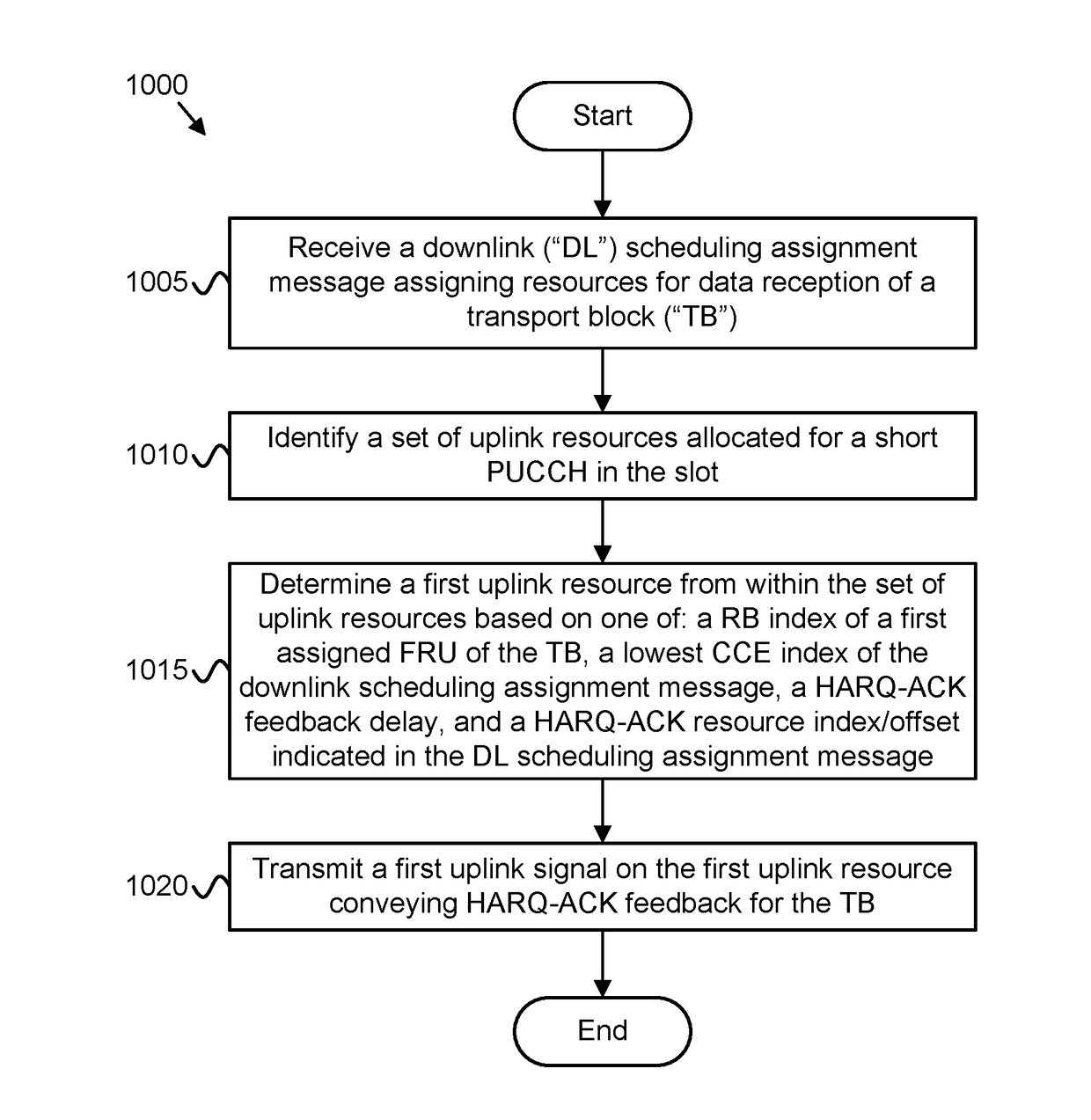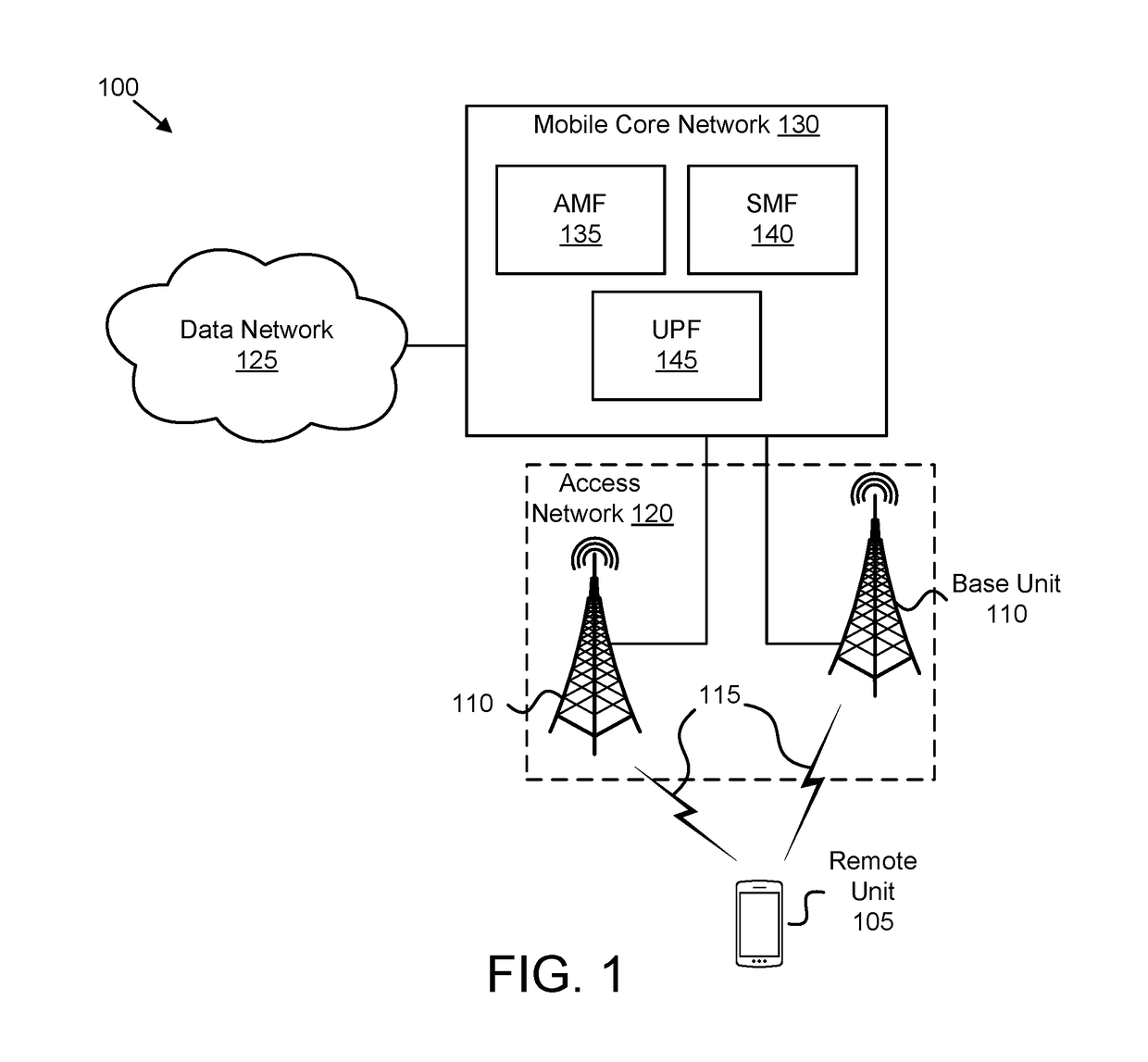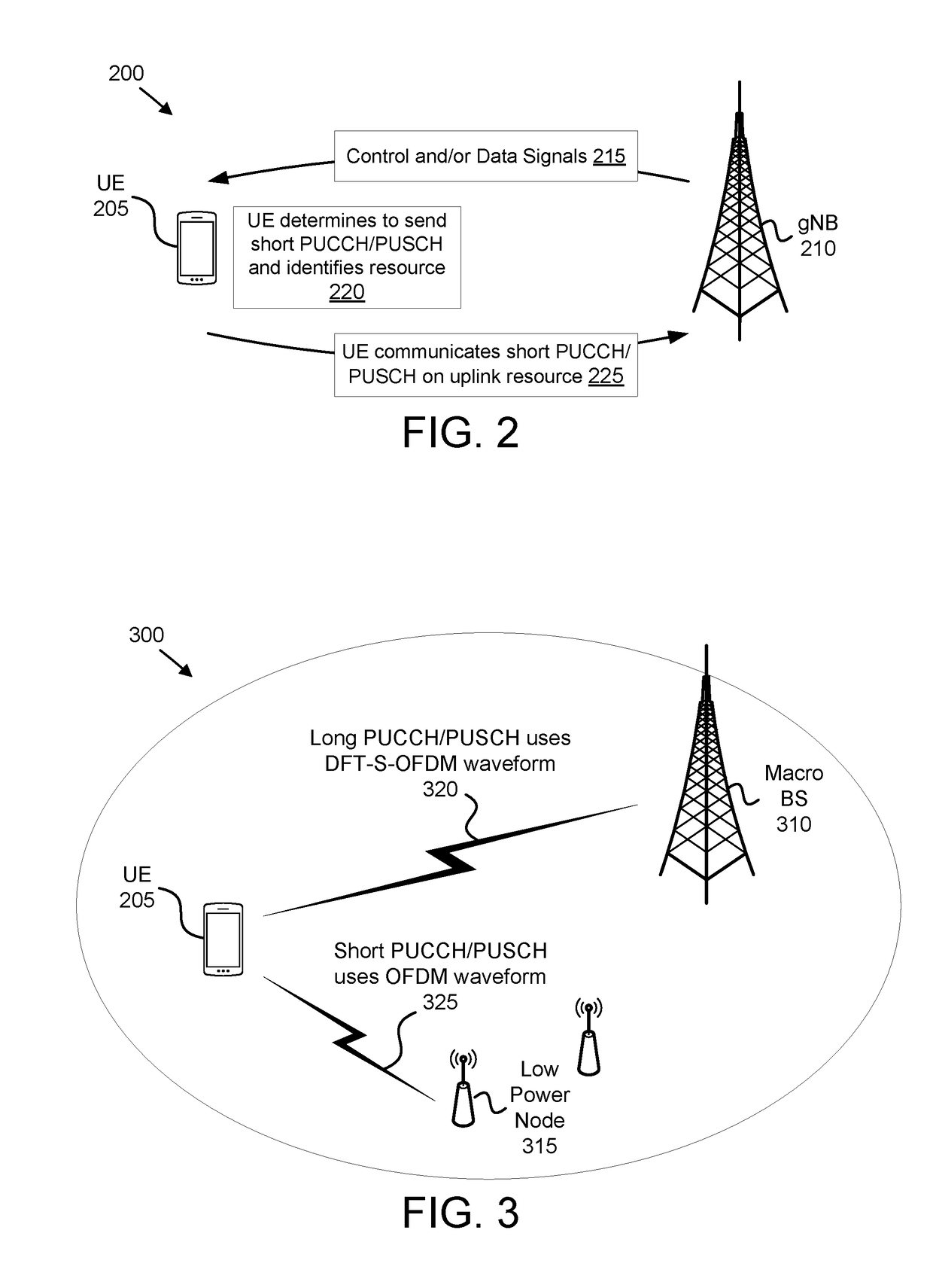Identifying a resource for transmitting a first uplink channel
a resource and uplink technology, applied in the field of short-duration uplink channels, can solve the problems of high overhead, long transmission time of lte pucch, and inability to achieve harq round trip time (rtt)
- Summary
- Abstract
- Description
- Claims
- Application Information
AI Technical Summary
Benefits of technology
Problems solved by technology
Method used
Image
Examples
first embodiment
[0112]In a first embodiment, the UCI 635 for the short PUCCH is intended for a first TRP (e.g., the low-power node 315) and the long PUSCH (or long PUCCH) is intended for a different TRP (e.g., the macro BS 310), the different TRPs requiring different Tx beam directions (e.g., different beamforming weights). In this scenario assume that the UE 205 is only capable of transmitting signals in one beam direction at a time, e.g., due to one radio frequency (RF) chain with one antenna panel, or two RF chains corresponding to dual polarization with one antenna panel, where each RF chain (a chain composed by RF devices like transmitters, receivers, cables, amplifiers, attenuators, analog-to-digital converters, loads, etc.) is connected to antenna elements with common polarization direction.
[0113]In this embodiment, the UE 205 does not transmit the symbol(s) of the long PUSCH / PUCCH which overlaps with the short PUCCH, but instead transmits the short PUCCH during the overlap time. In some emb...
second embodiment
[0114]In a second embodiment, the UCI 635 for the short PUCCH and the long PUSCH (or long PUCCH) are again intended for different TRPs with different Tx beam directions, respectively (e.g., different beamforming weights). However, in this scenario assume that the UE 205 is able to transmit signals with more than one beam direction at a time based on more than one antenna panel and / or associated more than one RF chain. Two or more RF chains may be capable of forming beams in different directions.
[0115]In this second embodiment, the UE 205 transmits both the long PUSCH / PUCCH and the short PUCCH as scheduled, irrespective of the configured waveform of the long PUSCH / PUCCH. In one embodiment, as each antenna panel has its own power amplifiers (e.g., combined with antenna elements), simultaneous transmission of DFT-S-OFDM and OFDM waveforms from different antenna panels does not degrade peak-to-average power ratio (“PAPR”) performance of the DFT-S-OFDM waveform.
third embodiment
[0116]In a third embodiment, the UCI 635 for the short PUCCH and the long PUSCH / PUCCH are intended for a common TRP (e.g., the macro BS 310) with the same Tx beam direction (e.g., using the same beamforming weight). Moreover, assume that in this scenario the DCI 615 indicated that the long PUSCH / PUCCH is to be transmitted with DFT-S-OFDM.
[0117]Because it is not desirable for the UE 205 to transmit the OFDM-based short PUCCH and the DFT-S-OFDM-based long PUSCH / PUCCH simultaneously on an overlapped symbol(s) (due to PAPR degradation), the UE 205 multiplexes the UCI 635 for the short PUCCH into the long PUSCH / PUCCH. Moreover, the UE 205 performs rate-matching or puncturing for the long PUSCH / PUCCH around the last symbol(s) corresponding to the short PUCCH to multiplex the UCI 635. In an alternative scenario, the UE 205 does not transmit the symbol(s) of long PUSCH / PUCCH which overlap with the short PUCCH, but only transmits the short PUCCH during the overlap time.
PUM
 Login to View More
Login to View More Abstract
Description
Claims
Application Information
 Login to View More
Login to View More - R&D
- Intellectual Property
- Life Sciences
- Materials
- Tech Scout
- Unparalleled Data Quality
- Higher Quality Content
- 60% Fewer Hallucinations
Browse by: Latest US Patents, China's latest patents, Technical Efficacy Thesaurus, Application Domain, Technology Topic, Popular Technical Reports.
© 2025 PatSnap. All rights reserved.Legal|Privacy policy|Modern Slavery Act Transparency Statement|Sitemap|About US| Contact US: help@patsnap.com



